
Gil Mellé is known for many things. He was a cornerstone of jazz, having played the tenor and baritone saxophone throughout several releases on the seminal Blue Note and Prestige labels in the 50s and 60s. Beyond this, he was a talented painter with work shown in galleries throughout New York as well as providing album art for heavy hitters such as Miles Davis, Thelonious Monk and Sonny Rollins. Within the purview of the NY jazz scene, it’s safe to suggest that Mellé was a staple.
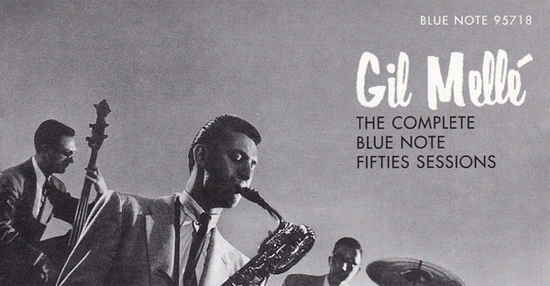
What is of particular interest, as far as this article is concerned, is Mellé’s work as a film composer. He was responsible for the scores of no less than 125 movies and television shows, including such famous titles as “Night Gallery’, ‘Kolchak’, ‘Columbo’ and ‘The Six Million Dollar Man’. It becomes increasingly apparent that Mellé was a heavy hitter and maybe not an obvious contender for inclusion on a site devoted to the cinematic outskirts. But Mellé was a rare breed, capable of infiltrating the mainstream with decidedly un-mainstream ideas. Case in point: ‘The Andromeda Strain’.

As I mention ‘The Andromeda Strain’ I can almost sense collective brows furrowing in confusion, but allow me to state my case. Based on the very popular 1969 book my Michael Crichton, Robert Wise’s 1971 cinematic adaptation of the same name is a rare beast that actually remains true to the source material. A satellite crashes into a small New Mexico town carrying an outer space microbe that proceeds to obliterate the town’s population. The film follows the exploits of a team of scientists who attempt to contain the spread of the deadly, clot-inducing virus. As the virus mutates, it builds immunity and even gains strength from attempts to stop it. It is discovered that their last ditch effort – the detonation of a nuclear bomb – will only serve to feed the virus.
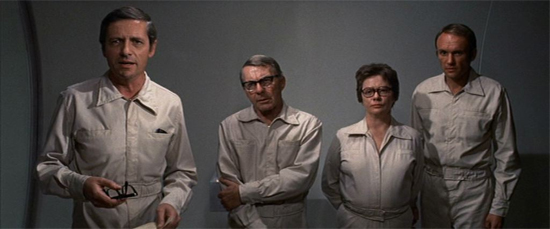
In approaching the question of how to score such a dystopian, bleak film, Mellé reached deep into the realm of experimentation and atonality to produce one of the most unsettling, truly uncompromising scores of the 20th century. For those who read my piece on the score of ‘The Forbidden Planet’ it should become clear that science fiction appears to be one of the most fertile genres for musical experimentation. Mellé’s score for ‘The Andromeda Strain’ ups the ante on Louis and Bebe Barron’s influential electronic score by introducing a certain brutality to the soundscape.
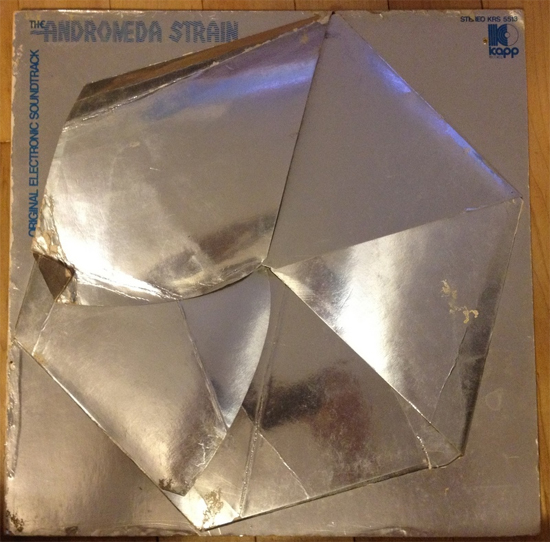
Mellé’s score is an amalgam of electronic abstraction, musique concrete manipulation as well as more traditional instrumentation. Together these form a world of sound at times eerie and, more often than not, harsh and unforgiving. What is also impressive is, like Louis and Bebe Barron before him, the electronic instruments of Mellé were homemade machines, symbiotically linked to the composer. We are left with an end result that flies in the face of what a mainstream movie should sound like. As unapologetically experimental as the score is, I’d wager that most people, normally not inclined to such music, assimilated it without issue, such is the success of the score’s integration. And in hindsight, how could anything more traditional have worked as well?
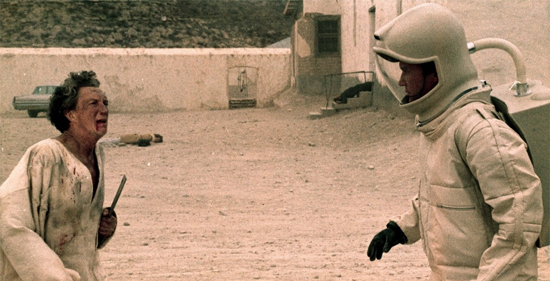
Since its emergence, Mellé’s score has maintained a cult fanaticism, especially among fans of early electronic music. Following its initial release in the early 70s, the soundtrack has only enjoyed small scale re-releases amounting to barely a few thousand copies. This is a real shame, because soundtracks as singular as this are few and far between, and would certainly be of interest to many people, even if just as a curio. The unique nature of the score was even hinted at upon the first pressing, which appeared on a hexagonal vinyl.
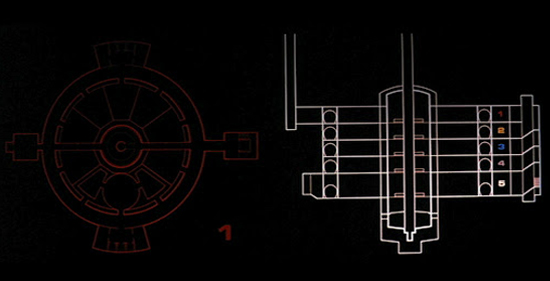
Whether or not this is an appropriate score to highlight on Mondo Explotio is ultimately up to you, but before you judge, I’d urge you to listen to the soundtrack in question, which appears bellow in its brief (barely 26-minute) entirety.
[youtube=http://www.youtube.com/watch?v=A_wMSy3geXM&feature=relmfu&w=540]
[youtube=http://www.youtube.com/watch?v=mV4o7t6xDtc&feature=relmfu&w=540]




